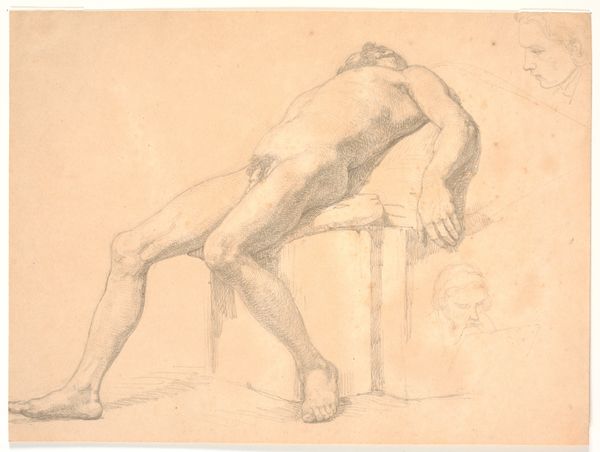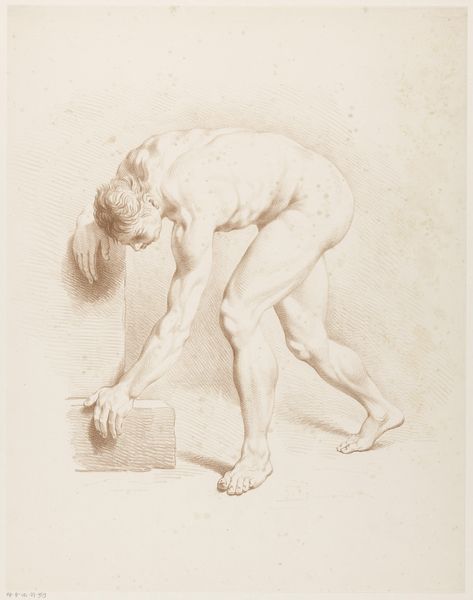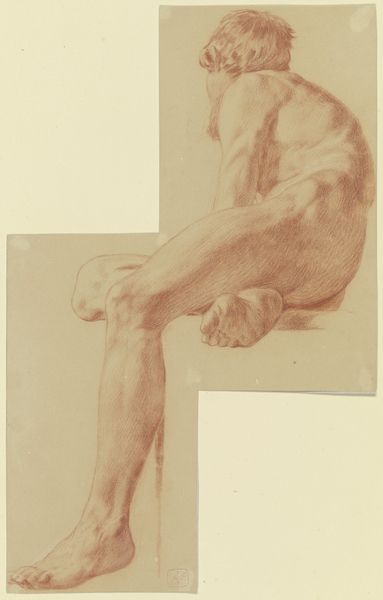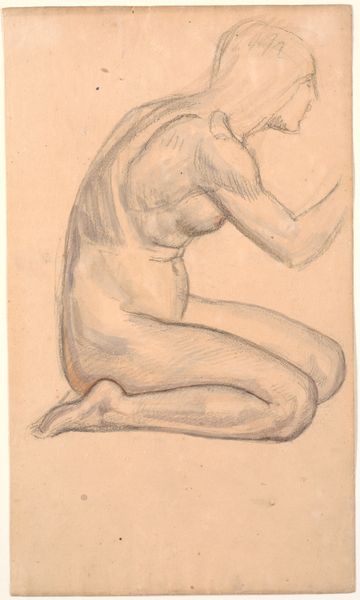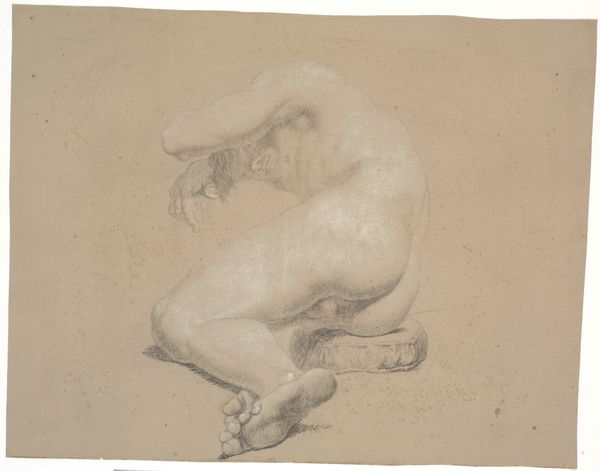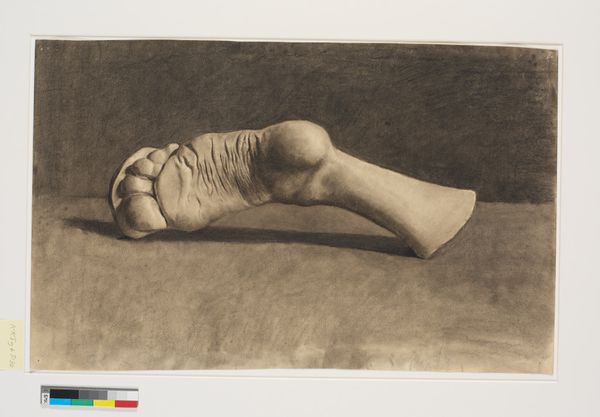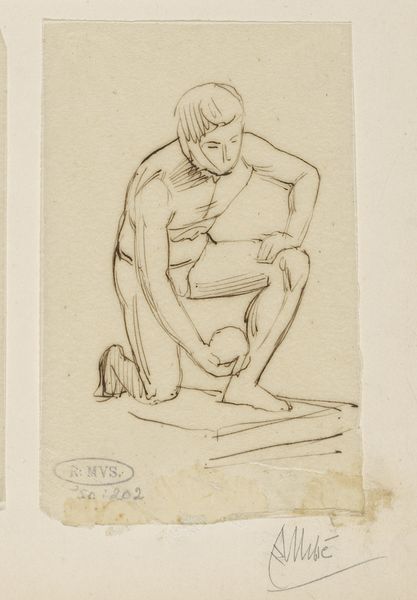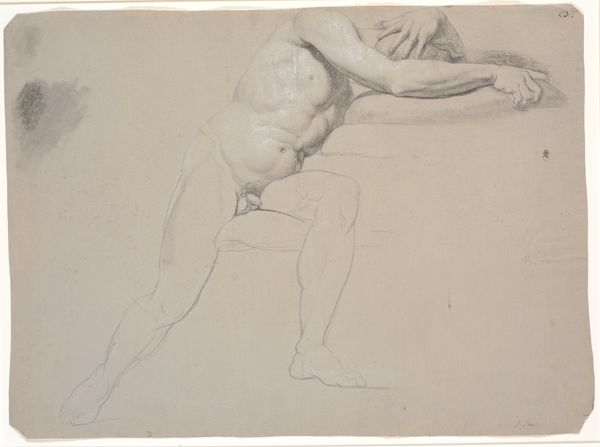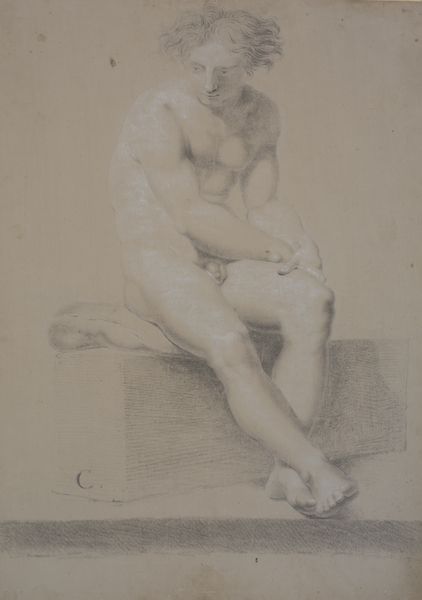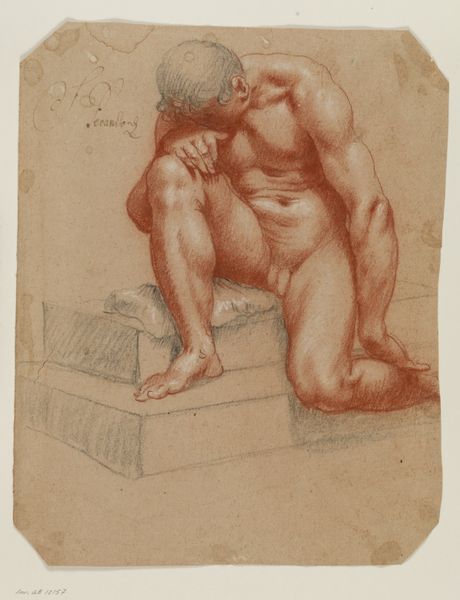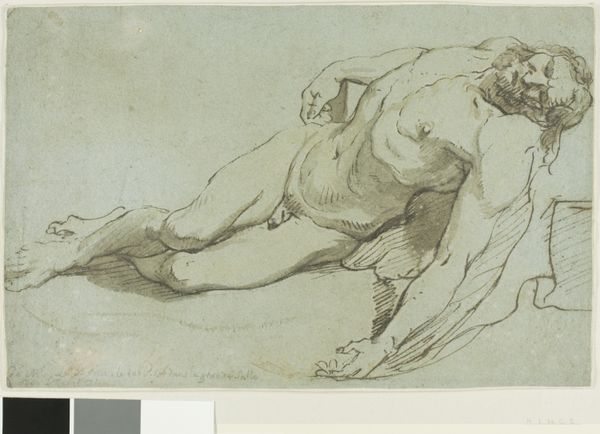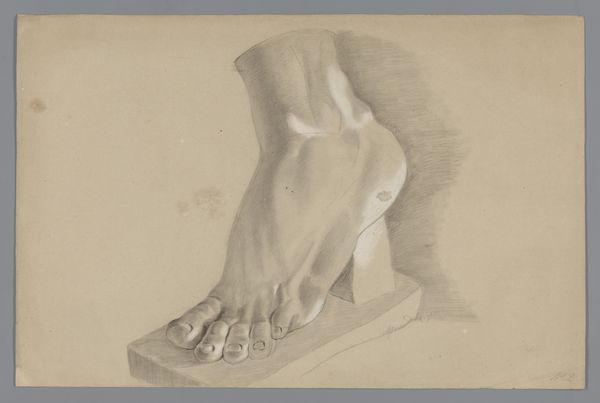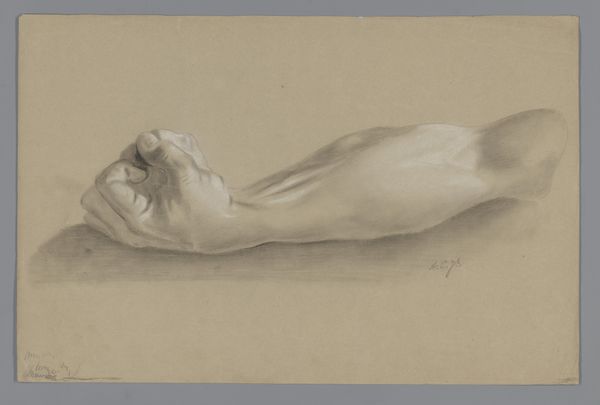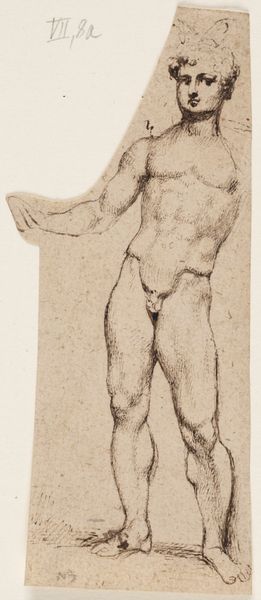
drawing, charcoal
#
drawing
#
neoclassicism
#
charcoal drawing
#
charcoal
#
academic-art
#
nude
Dimensions: 370 mm (height) x 465 mm (width) (bladmaal)
Curator: Welcome. Here we see "Liggende mandlig model, set bagfra," a charcoal drawing by Nicolai Abildgaard, made between 1743 and 1809. Editor: My first thought is the figure's pose – almost a languid vulnerability, especially given we’re seeing him from the back. Curator: Indeed. The artist’s precise draftsmanship is evident in the careful modeling of the musculature and the play of light and shadow. Consider the neo-classical style—idealized form, emphasis on line, restrained emotion. Abildgaard masterfully articulates the human form in this work. Editor: Restrained, perhaps, on the surface, but doesn't this drawing subtly subvert expectations? Showing a male nude from this perspective—back-facing, reclining—introduces a certain passive sensuality, doesn't it? Where does that fit in the heroic narratives usually associated with neoclassicism? Curator: Well, while heroic narratives were common in that era, life studies like these were part of the academic process. This artwork serves as a testament to the academic art style: where draftsmanship reigns supreme in representing idealized forms. The subject is positioned on a simple geometric shape, likely for stability, yet notice how the charcoal shading renders a palpable sense of volume. Editor: But academic tradition never exists in a vacuum, does it? Looking closer, the drawing calls attention to the gaze, who can view a subject like this? What does it tell us about historical power structures between artist and model? Who is allowed to see and who is being seen, as a reflection of a historical moment? The artist and the subject also appear removed from society, thus this allows space to engage questions about class, privilege, and representation during the artist’s lifetime. Curator: I find your socio-political considerations thought-provoking. Personally, the intrinsic qualities of the drawing speak powerfully of Abildgaard’s deep understanding of the human anatomy and the art of representation itself. Editor: For me, the drawing serves as a powerful reminder that even seemingly timeless forms can hold layered stories, reflecting on cultural and social dialogues from the past, even shaping contemporary meaning-making processes. Curator: I leave appreciating Abildgaard's deft ability to portray ideal proportions while eliciting varied interpretive approaches across distinct historical frameworks.
Comments
No comments
Be the first to comment and join the conversation on the ultimate creative platform.
